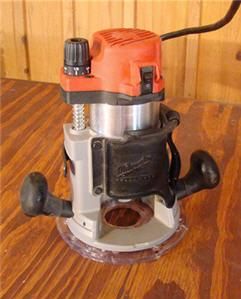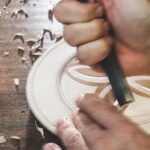Woodworking is a craft that requires precision and accuracy, and one of the most essential tools in a woodworker’s arsenal is the square. Whether you are building furniture, cabinets, or intricate joinery, having a reliable and accurate square is crucial to ensuring your project turns out as intended. In this article, we will delve into the world of squares in woodworking, exploring their definition, types, importance, and how to choose the right one for your specific needs.
Squares in woodworking are not your typical school supply squares used in geometry class. A square in woodworking refers to a specialized measuring tool with two perpendicular arms that meet at a 90-degree angle. These arms allow woodworkers to mark precise right angles on their workpieces and ensure that all cuts and joinery are made with accuracy. This small but mighty tool plays a significant role in achieving clean lines, perfect corners, and overall symmetry in woodworking projects.
Understanding the importance of squares in woodworking goes beyond creating visually appealing pieces. The use of squares can greatly impact the functionality and structural integrity of your creations. A poorly squared joint or misaligned corner can compromise the strength and stability of a piece over time. Therefore, it is crucial to have a thorough understanding of what squares are, how they function, and why they matter before diving into your next woodwork project.
Throughout this article, we will explore various aspects related to squares in woodworking. We will discuss different types of squares available on the market today and guide you on choosing the right square for your specific needs. We will also highlight the significance of precision when using squares and provide tips on achieving accurate measurements consistently. Additionally, we will touch upon square maintenance techniques to prolong the lifespan of your tool.
By diving into the world of squares in woodworking, you will gain valuable insights into an essential tool that can make all the difference between an amateurish project and a professional-quality creation. So let us embark on this journey together, and uncover the wonders of squares in woodworking.
Understanding the Definition
In woodworking, a square refers to a measuring and marking tool used to ensure that the angles and edges of a piece of wood are perpendicular or 90 degrees. It is an essential tool for accurate and precise woodworking, as having properly squared corners is crucial for achieving good joinery, making accurate cuts, and ensuring the overall quality of the finished piece.
A square typically consists of two main parts: a long blade or beam and a handle at a right angle to it. The blade is usually made of steel and has markings along its length for measurement purposes. The handle can be made of various materials such as wood, plastic, or metal. The combination of the blade and handle forms an L-shape, allowing woodworkers to accurately check if their workpieces are square.
There are different types of squares available in woodworking, each designed for specific tasks. One common type is the try square, which has a 90-degree angle and is primarily used for checking the accuracy of right angles. Another type is the combination square, which features an adjustable blade that can be set at various angles to measure and transfer dimensions accurately. There are also framing squares and speed squares that are commonly used in carpentry projects.
It’s important to note that squares can come in different sizes, ranging from smaller pocket-sized versions to larger ones suitable for bigger projects. When choosing a square for your woodworking projects, consider factors such as its size, material quality (for durability), accuracy (check if it has been calibrated properly), ease of use, and price point.
It’s also useful to read reviews or seek recommendations from experienced woodworkers to ensure you’re investing in a reliable tool that will last for years to come.
| Type | Features | Common Uses |
|---|---|---|
| Try Square | 90-degree angle, fixed blade | Checking right angles |
| Combination Square | Adjustable blade, measuring and transferring dimensions accurately | Layout work, marking out joinery, verifying angles |
| Framing Square | Larger size, with wider blades for larger projects | Carpentry and framing tasks such as squaring walls and marking angled cuts |
| Speed Square | Triangle-shaped square with markings for common angles (45 and 90 degrees) | Rafters and stair layout, making straight cuts, marking accurate lines quickly |
Types of Squares
In the world of woodworking, there are various types of squares that serve different purposes and can greatly assist in ensuring accuracy and precision in your projects. Let’s take a closer look at the different varieties available and how they can benefit your woodworking endeavors.
One of the most common types of square is the combination square. This versatile tool consists of a ruler or blade that can be adjusted to different angles, typically 45 degrees, 90 degrees, and 135 degrees. The adjustable nature of the combination square makes it ideal for layout work, measuring and marking angles, as well as checking for squareness.
Another type of square commonly used by woodworkers is the try square. This simple tool features a fixed right angle that allows you to easily determine if a surface or edge is perfectly perpendicular to another. The try square is particularly useful for marking out and testing the squareness of corners during assembly or when fitting joinery pieces together.
For projects where precision is paramount, engineers squares are often employed. These squares are specifically designed with high accuracy in mind and are typically made from hardened steel or other durable materials. Engineers squares have carefully machined edges that allow for precise layout work, ensuring that all measurements are accurately squared.
In addition to these main types, there are also specialized squares such as miter squares for accurately cutting miters, saddle squares for marking lines parallel to an edge or surface, and drafting squares for technical drawing work. By understanding the different varieties available, you can choose the appropriate square for each specific task in your woodworking projects.
Overall, having a variety of squares in your woodworking arsenal will greatly enhance your ability to achieve precise measurements and maintain accurate angles throughout your projects. Whether you’re marking layouts, checking for squareness or fitting joints together snugly, selecting and using the right square will be indispensable in achieving professional results.
How to Choose the Right Square for Your Woodworking Projects
When it comes to woodworking, choosing the right square for your projects is crucial. A square is a versatile and essential tool that helps ensure accuracy and precision in measuring and marking wood. With so many options available, it can be overwhelming to select the best one for your needs. In this section, we will provide some guidelines on how to choose the right square for your woodworking projects.
Firstly, consider the material of the square. Woodworking squares are typically made from either aluminum or steel. Aluminum squares are lightweight and resistant to rust, making them ideal for general woodworking tasks. On the other hand, steel squares are more durable and offer better accuracy due to their weight and stability.
Next, think about the size of the square. Squares come in various lengths, usually ranging from 6 inches to 12 inches. The size you choose depends on your project requirements and personal preference. Smaller squares are handy for intricate work or when space is limited, while larger squares provide greater stability for larger pieces.
Accuracy is another important factor to consider when selecting a square. Look for squares that have been precisely machined to ensure their edges are perfectly straight and at a true 90-degree angle. Check that the edges meet tightly without any gaps.
| Square Type | Description |
|---|---|
| Try Square | A simple L-shaped square with a blade attached at a perfect 90-degree angle. |
| Combination Square | A versatile square featuring an adjustable head that can be set at various angles and used as a level or depth gauge. |
| Machinist Square | A precise square primarily used in metalworking, but also useful in woodworking for checking right angles and machine setups. |
| Framing Square | A large square with a long blade, commonly used in carpentry and framing work. |
Square Accuracy
In woodworking, precision is of utmost importance. Whether you are measuring, marking, or aligning pieces of wood, accuracy ensures that your project turns out exactly as intended. This is where square accuracy becomes crucial. By using a square that is perfectly square and precise, you can ensure that your measurements and layouts are accurate, resulting in seamless joints and clean finishes.
Why Precision Matters
The accuracy of a square directly impacts the overall quality of your woodworking projects. If your square is not perfectly square or if it has any inaccuracies, it can throw off your measurements and lead to misaligned joints. This can be detrimental to the structural integrity and visual appeal of your piece.
Furthermore, accuracy in woodworking extends beyond just measuring and marking. Precise angles and tight tolerances are often required when fitting joinery or making intricate cuts. Using an inaccurate square can result in poor fitment or uneven cuts, compromising the final product.
How to Achieve Square Accuracy
To achieve square accuracy in woodworking, there are several steps you can take:
- Invest in a high-quality square: Choosing a well-made, reputable brand of square will greatly increase the likelihood of obtaining precise measurements. Look for squares that are made from durable materials such as machined steel with accurately graduated markings.
- Test for accuracy: Before using a new square for critical measurements or layouts, it is important to verify its accuracy first. You can do this by checking it against a known reference such as a reliable machinist’s square or precision ground flat surface.
- Maintain cleanliness: Dust and debris can affect the accuracy of your squares. Regularly clean them using non-abrasive methods to remove any buildup.
- Store properly: Keep your squares stored in a dry place where they won’t be subjected to extreme temperatures or conditions that could warp them over time.
By following these steps and prioritizing accuracy in your woodworking, you can ensure that your projects are of the highest quality and achieve the desired results.
Square Maintenance and Care
Woodworking squares are essential tools that require proper maintenance and care to ensure their accuracy and longevity. By taking the time to clean, store, and protect your squares, you can ensure that they remain in top shape for years to come. Here are some tips for keeping your squares well-maintained:
Cleaning Your Squares
One of the most basic care steps for maintaining woodworking squares is keeping them clean. Accumulated dirt, dust, and debris can affect the square’s accuracy, leading to imprecise measurements. To clean your square, use a soft cloth or brush to gently remove any dirt or debris on its surfaces. You can also use a mild soapy water solution for more stubborn stains.
After cleaning, it is crucial to dry the square thoroughly before storing it. Make sure there is no moisture left on the square to prevent rusting and corrosion. You can use a clean cloth or towel to wipe down the square and ensure it is completely dry before putting it away.
Protecting Your Squares
Proper storage is essential for protecting your woodworking squares from damage. When not in use, store your squares in a designated area where they will not be bumped or knocked around. Ideally, this should be a cool and dry place with controlled humidity levels.
Consider investing in a protective case or sleeve for each square to prevent scratches, dings, and other forms of physical damage. These cases are typically designed with foam or cushioning material that provides an extra layer of protection during storage or transportation.
Regular Calibration and Adjustment
To maintain accuracy over time, it is essential to regularly check and calibrate your woodworking squares. Overuse or accidental mishandling may cause a square’s components to become misaligned or damaged.
To check if your square is still accurate, start by placing it against a flat surface and observing if the blade remains perpendicular to the surface. If the square does not pass this test, you may need to adjust or align it using manufacturer-provided instructions.
Additionally, it is good practice to periodically verify your squares’ accuracy using another trusted measuring tool or reference square. This step ensures that your squares are consistently providing precise measurements and helps identify any potential issues before they affect your projects.
By following these maintenance and care tips, you can keep your woodworking squares in top shape for years of accurate and reliable use. Taking the time to clean, protect, and calibrate your squares will not only prolong their lifespan but also contribute to the overall success of your woodworking projects.
Common Uses of Squares in Woodworking
In woodworking, squares are an essential tool that is used for a variety of purposes. From layouts to joinery, squares play a crucial role in ensuring accuracy and precision in woodworking projects. This section will explore some common uses of squares in woodworking.
One of the primary uses of squares in woodworking is for making accurate layout lines. When starting a project, woodworkers use squares to mark straight lines and right angles on their workpieces. This ensures that all the subsequent cuts and joinery are done accurately. Squares can be used to mark out dimensions such as widths, lengths, and depths on the wood, helping woodworkers plan and execute their designs effectively.
Another common use of squares in woodworking is for checking and ensuring that joints are perfectly square. Squareness is crucial for strong and stable joints. Woodworkers utilize squares to check if corners are true 90-degree angles before gluing or fastening pieces together. By aligning a square against the joint, they can ensure that the joint will fit properly and provide strength to the overall structure.
Squares also come in handy when setting up tools such as table saws or miter saws. Woodworkers often use them as a reference to align the blade or fence at precise right angles to the workpiece. By making slight adjustments based on the square’s alignment, woodworkers can achieve accurate and consistent cuts throughout their projects.
To sum it up, squares have various uses in woodworking that range from marking layout lines to ensuring squareness in joinery. They provide woodworkers with a reliable way to achieve precision and accuracy, resulting in well-crafted projects with strong joints and clean cuts. Whether you are a beginner or an experienced woodworker, understanding how to effectively utilize squares will greatly enhance your woodworking skills and finished products.
Square Alternatives
Woodworking requires precise measurements and accurate angles to ensure a successful project. While squares are the go-to tool for achieving this, there are alternatives that can be used as well. These alternative measurement tools offer different benefits and may be better suited for certain tasks or preferences.
One common alternative to squares in woodworking is the combination square. The combination square consists of a ruler-like body with an adjustable head that can be positioned at various angles. This versatile tool allows woodworkers to measure, mark, and transfer angles accurately. The combination square is especially useful when working on projects that require multiple angles or complex layouts.
Another alternative to traditional squares is the sliding T-bevel. Also known as a bevel gauge or sliding bevel, this tool features a handle attached to a blade that can be adjusted and locked into any desired angle. The sliding T-bevel is particularly helpful for duplicating or transferring angles from one piece of wood to another.
In addition to these alternatives, there are digital squares available that use advanced technology to provide precise measurements. These digital squares often have digital displays, allowing woodworkers to easily read measurements in various units and even calculate angles. Though they are more expensive than traditional squares, digital squares can significantly speed up the measuring process and reduce human error.
When choosing alternative measurement tools for woodworking, it’s important to consider the specific needs of your project as well as personal preferences. Some woodworkers may find traditional squares sufficient for most tasks, while others may prefer the versatility and convenience offered by combination squares or digital options. Ultimately, having a variety of measurement tools at your disposal will help ensure accuracy and efficiency in your woodworking projects.
- The combination square offers versatility and precise angle measurements.
- The sliding T-bevel is useful for duplicating or transferring angles.
- Digital squares provide advanced technology for quick and accurate measurements.
Tips and Tricks
Using squares effectively in woodworking projects is crucial for achieving accurate and precise results. Here are some tips and tricks to help you use squares effectively in your woodworking projects:
- Checking for Squareness: Before starting any woodworking project, it’s important to ensure that your square is actually square. To check for squareness, place the edge of the square against a straight edge, such as a table saw fence or a known flat surface.
Then, slide the square along the edge and observe if there are any gaps between the edge of the square and the straight edge. If there are gaps, it means that your square is not true and may need adjustment or replacement. - Marking Layout Lines: Squares are commonly used to mark layout lines on wood surfaces for various joinery tasks, such as cutting dovetails or mortises. To mark accurate layout lines, use a sharp pencil or a marking knife along the inside edge of the square. Ensure that you hold the square firmly against the wood surface as you make your marks to avoid any slippage.
- Achieving Right Angles: Squares are indispensable when it comes to creating right angles in woodworking projects. To achieve right angles using a square, align one side of the square with one edge of the workpiece and then draw a line along another side using a pencil or marking knife. Repeat this process on all sides of your workpiece to create perfectly perpendicular joints.
- Measuring Angles Other Than 90 Degrees: While squares are primarily designed for 90-degree angles, they can also be utilized for measuring other angles when necessary. By placing one arm of the square on one face of an angle and extending its other arm along the adjacent face, you can accurately measure angles different from 90 degrees using the markings or graduations on your square.
- Protecting Your Square: To ensure longevity and accuracy, it’s essential to properly care for your squares. Store them in a dedicated holder or toolbox to prevent them from getting damaged or bent. Keep your squares clean and free from dust and debris by wiping them regularly with a dry cloth. If your square becomes dirty, use a mild solvent and a soft cloth to clean it gently.
By following these tips and tricks, you can enhance the effectiveness of using squares in your woodworking projects. Remember, accuracy is key in woodworking, and a well-maintained square is an essential tool for achieving precise results.
Conclusion
In conclusion, squares play a crucial role in woodworking due to their ability to ensure accuracy and precision in projects. Whether you’re a beginner or an experienced woodworker, understanding the importance of squares can greatly enhance the quality of your work. By using squares to achieve precise angles and measurements, you can guarantee that your pieces fit together seamlessly, resulting in professional-looking creations.
It is essential to choose the right square for your woodworking projects. Consider factors such as size, material, and accuracy when making your selection. Investing in high-quality squares will not only provide reliable results but also increase the longevity of your tools. Remember to regularly maintain and care for your squares by keeping them clean and storing them properly. This will help to preserve their accuracy and extend their lifespan.
Furthermore, squares have a wide range of applications in woodworking. From laying out markings on wood surfaces to ensuring accurate joints during assembly, squares are versatile tools that can be utilized throughout the entire process of constructing a piece. Their versatility makes them indispensable in any woodworker’s arsenal.
Finally, I encourage you to continue exploring different varieties of squares and techniques for using them effectively in your woodworking projects. The more you experiment with squares, the more you will appreciate their value in achieving precise cuts and angles. So go ahead and venture into the world of squares – it’s an investment that will undoubtedly take your woodworking skills to new heights.
Frequently Asked Questions
Why is a carpenter’s square called a square?
A carpenter’s square is called a square because of its shape and functionality. The tool itself has two arms that meet at a right angle, forming the shape of a perfect square.
This design allows carpenters to accurately measure and mark right angles and square lines on their workpieces. From woodworking projects to construction sites, the square has been utilized for centuries due to its ability to ensure precise and symmetrical results.
What are the four 4 types of squares used in woodworking?
There are four main types of squares used in woodworking: try squares, combination squares, framing squares, and speed squares. Each type serves specific purposes in different woodworking tasks. Try squares are commonly used to check the accuracy of right angles in small-scale projects or when fitting joints together.
Combination squares have an adjustable blade that allows for measuring and marking various angles beyond just 90 degrees. Framing squares are larger and more heavy-duty, primarily used in carpentry or framing large structures like houses. Finally, speed squares are compact triangular tools that can perform multiple functions such as measuring angles, marking cuts, or working as a protractor.
How big is a square in carpentry?
Even though the size of a square in carpentry can vary depending on the specific needs of a project, there are common sizes available on the market. Squares typically come in lengths ranging from 6 inches to 12 inches (15 cm to 30 cm). Carpenters often choose the size that best suits their work requirements considering factors like portability versus precision needs.
Smaller squares may be favored for smaller-scale projects or when working in tight spaces where maneuverability is essential, while larger squares might be preferred for larger tasks where maximum accuracy is crucial. Ultimately, selecting the right-sized square is a matter of balancing practicality and precision for each carpentry job at hand.

Hi everyone! I’m a woodworker and blogger, and this is my woodworking blog. In my blog, I share tips and tricks for woodworkers of all skill levels, as well as project ideas that you can try yourself.





